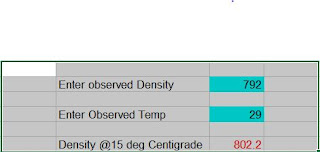British Airways BA-038 Heathrow Accident – Lessons Learned - Part 9
British Airways BA-038 Heathrow Accident – Lessons Learned - Part 9
On January 17, 2008, a British Airways 777-236ER equipped with Rolls Royce RB211 Trent 800 engines, landed short of runway 27L at Heathrow International Airport. The airplane was operating as Flight 38 from Beijing to London with 136 passengers and 16 crew members on board. The airplane impacted the ground short of the runway, skidded in the grassy area and came to rest at the end of the runway. This resulted in substantial structural damage but there was no fire.
Safety Assumptions:
Fuel system design features would prevent formation of ice in quantities that could adversely affect engine operation. But reality was not so.
The British Air Accidents Investigation Board (AAIB) determined that the most likely cause of the accident was a fuel flow restriction on both engines, resulting in a significant thrust loss during final approach. The fuel flow restriction was concluded to have been the result of an accumulation of ice in the fuel system which released in a short time period, collected on, and restricted fuel flow through the Fuel-Oil Heat Exchanger. The associated thrust loss resulted in a reduction in airplane performance, and deterioration in the flight path such that landing on the runway was not possible.
FAA released Lessons learned from British Airways Accident in their data base.
Technical Related Lessons:
Operation with turbine engine fuel containing normal amounts of entrained water results in ice accretion inside airplane fuel system tubing during long range flights. In order to maintain propulsion system separation and isolation requirements, the airplane and engine fuel feed systems must be capable of continued operation following release of accumulated ice from fuel feed system internal surfaces. (Threat Category: System Isolation/Segregation)
This accident revealed that fuel temperatures in ranges above the fuel freezing point, and with concentrations of water that are normally expected to be encountered can lead to fuel system ice that can severely restrict fuel flow. On approach, having flown nearly 14 hours, engine thrust modulations typical of this phase of flight caused ice that had accumulated in the fuel feed lines to break free, and clog the FOHE face, resulting in a fuel flow restriction, and prevented the engines from producing normal thrust. This restriction was of sufficient duration that the airplane could not maintain flight, and impacted just short of the approach end of the runway.
Common Theme Related Lessons:
Turbine fuel temperatures in the range of -5C to -20C represent the "sticky range" where ice can accumulate in fuel tubing, and will lead to flushing and potential fuel system restrictions. (Common Theme: Flawed Assumptions)
Historical assumptions about turbine fuel icing, and regulatory requirements assumed that critical operating conditions occurred when the fuel was near its freezing point. This accident revealed that there is a fuel temperature range (the so-called sticky range), which is above the freezing point of the fuel, and can have severe consequences, up to and including blockage of fuel flow. This particular icing phenomenon can occur with water concentrations that are considered "normal" for turbine fuels, and can be expected to be encountered whenever fuel temperature is inside the sticky range.
Author's Profile
List of all articles on Petroleum QC upto 06 Apr 2019 by author.
Author's Profile
List of all articles on Petroleum QC upto 06 Apr 2019 by author.

Comments